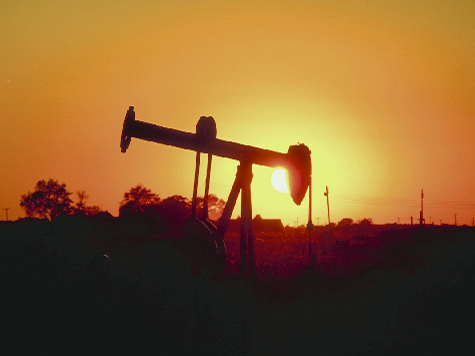
The Obama Administration tried to make a big deal this week out of their proposed safety regulations to make the infamous “exploding oil trains” hauling crude oil across the U.S. less dangerous. But despite at least one fiery oil train accident a month, the Obama Administration refuses to green light safer oil pipelines or to require oil trains to strip crude oil of flammable natural gas liquids (NGLs) before loading.
The White House has chosen to propose safety regulations that will be far inferior for shipping domestically produced crude oil by railroads to refineries in the U.S. than exporting the same crude oil to foreign refineries by ships.
The Administration says it wants to phase out “old tank cars,” enforce lower speed limits, require better brakes, and try rerouting trains around populated areas. Each of these steps may provide small incremental improvements, but as I reported on June 25th (“Obama Executive Order Allows U.S. Crude Oil Exports for First Time in Decades“), the White House just set mandates that require all domestically produced crude oil exported by tanker ships to first be degassed before loading.
There have been an increasing number of fiery crashes from “oil-trains” carrying crude oil out of North Dakota’s Bakken and Three Forks fields, where hydraulic fracking of shale has created a spectacular American domestic oil boom. The major reason for the fires to turn into explosions in some of the accidents is that oil-train operators do not “stabilize” crude oil by stripping off flammable natural gas liquids (NGLs) before loading.
The infrastructure for railroads to degas NGLs might cost billions of dollars to build. This type of facility is very economically justified for large economy-of-scale crude oil loading operations at a port. But with Bakken crude oil allowed to travel south up to 1,500 miles by rail tankers to the Gulf Coast without mandates for stabilization, producers and logistics companies are being incentivized to ship more volume by rail.
Six years ago, trains seldom pulled tank cars loaded with crude oil, and most railroads loaded their DOT-111 tankers with cargoes of non-explosive products like corn syrup sweeteners and industrial chemicals.
But the American crude oil boom since 2008 has driven domestic production up by about 70%, or 3 billion barrels. Fracking of underground shale formations in the Bakken region of North Dakota allowed the state to grow production by 177% over the last three years. Domestic production reached 8 million barrels a day by the end of last year and has been accelerating by an additional 100,000 barrels a day each month this year.
Railroads are now making fortunes carrying North Dakota crude oil from the Bakken field at an average cost of $17 a barrel of crude oil to southern refineries, versus the estimated $10 a barrel the delayed Keystone XL Pipeline would have charged. The U.S. oil boom has overwhelmed America’s ability to move crude oil by the existing pipeline system. This has caused distribution bottlenecks and created the opportunity for railroads to steal over a million barrels a day from pipeline companies.
But railroads were specifically designed to transport freight near where people live, whereas pipelines carry toxic products and go to refineries that are specifically located at safe distances away from populated areas. This explains why in August of 2013 a 100-car oil train took 47 lives in Lac-Megantic, Quebec, when it crashed and exploded. With about one detonation and fire from an oil-train in North America every month, it is fortunate that there have not been more lives lost.
Many reporters are baffled by what Business Week referred to as “labyrinthine rule-making process reached by the White House back in April when the U.S. Department of Transportation sent its crude-safety proposal for consideration.”
But of the roughly 92,000 U.S. rail tankers being used today to haul crude oil and other flammable liquids in the U.S., only 14,000 have been updated with modern safety features. Modifying the 78,000 DOT-111 other rail tankers to meet higher flammability standards could cost the industry about $5.2 billion, according to a Bloomberg estimate. The railroad industry is not in any hurry to make this level of investment.
The simple fact is that the Obama Administration is proposing safety regulations that will be far inferior for shipping domestically produced crude oil by railroads to refineries in the U.S. than exporting the same crude oil to foreign refineries by ships.
The author welcomes feedback and will respond to reader comments.
From July 15th to July 29th, Chriss Street is teaching “Entrepreneurship and Capitalist Business Strategy” at Ho Chi Minh University in Vietnam.

COMMENTS
Please let us know if you're having issues with commenting.